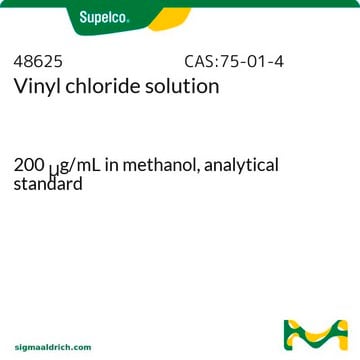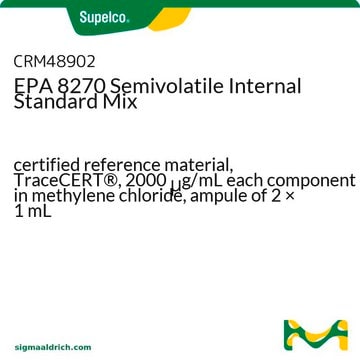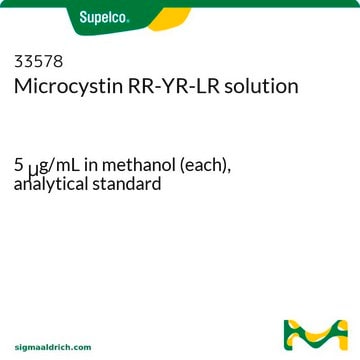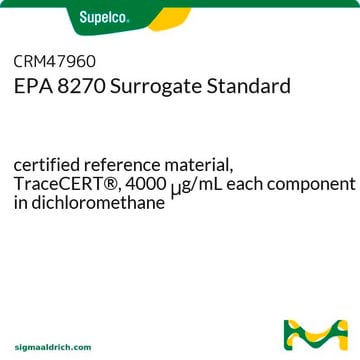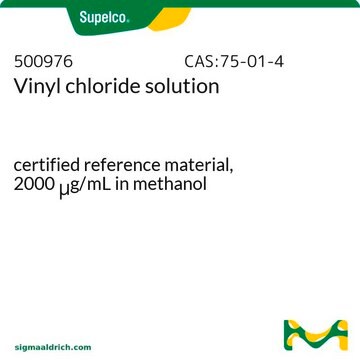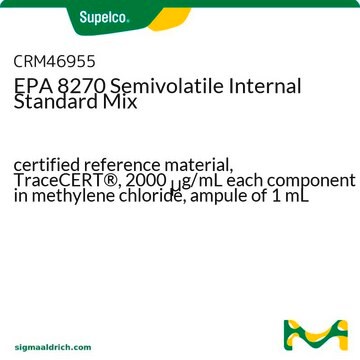48600
Dichloromethane solution
certified reference material, 200 μg/mL in methanol
Sinônimo(s):
Methylene chloride solution
About This Item
Produtos recomendados
grau
certified reference material
TraceCERT®
linha de produto
TraceCERT®
Certificado de análise (CofA)
current certificate can be downloaded
embalagem
ampule of 1 mL
concentração
200 μg/mL in methanol
técnica(s)
HPLC: suitable
gas chromatography (GC): suitable
densidade
0.791 g/cm3
aplicação(ões)
agriculture
environmental
Formato
single component solution
temperatura de armazenamento
2-8°C
cadeia de caracteres SMILES
ClCCl
InChI
1S/CH2Cl2/c2-1-3/h1H2
chave InChI
YMWUJEATGCHHMB-UHFFFAOYSA-N
Procurando produtos similares? Visita Guia de comparação de produtos
Aplicação
Informações legais
Palavra indicadora
Danger
Frases de perigo
Declarações de precaução
Classificações de perigo
Acute Tox. 3 Dermal - Acute Tox. 3 Inhalation - Acute Tox. 3 Oral - Flam. Liq. 2 - STOT SE 1
Órgãos-alvo
Eyes,Central nervous system
Código de classe de armazenamento
3 - Flammable liquids
Classe de risco de água (WGK)
WGK 2
Ponto de fulgor (°F)
51.8 °F - closed cup
Ponto de fulgor (°C)
11 °C - closed cup
Escolha uma das versões mais recentes:
Certificados de análise (COA)
It looks like we've run into a problem, but you can still download Certificates of Analysis from our Documentos section.
Se precisar de ajuda, entre em contato Atendimento ao cliente
Já possui este produto?
Encontre a documentação dos produtos que você adquiriu recentemente na biblioteca de documentos.
Os clientes também visualizaram
Active Filters
Nossa equipe de cientistas tem experiência em todas as áreas de pesquisa, incluindo Life Sciences, ciência de materiais, síntese química, cromatografia, química analítica e muitas outras.
Entre em contato com a assistência técnica
